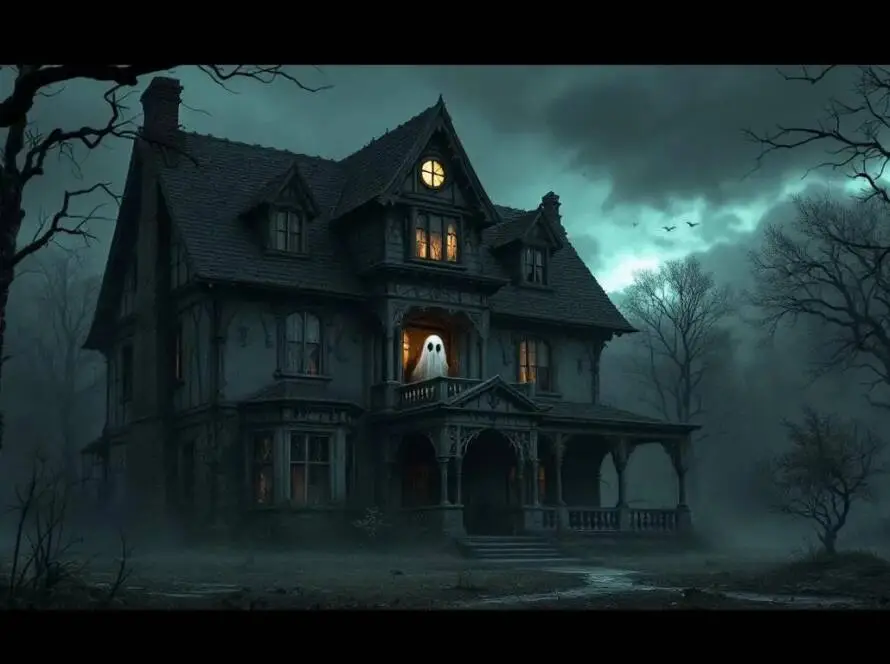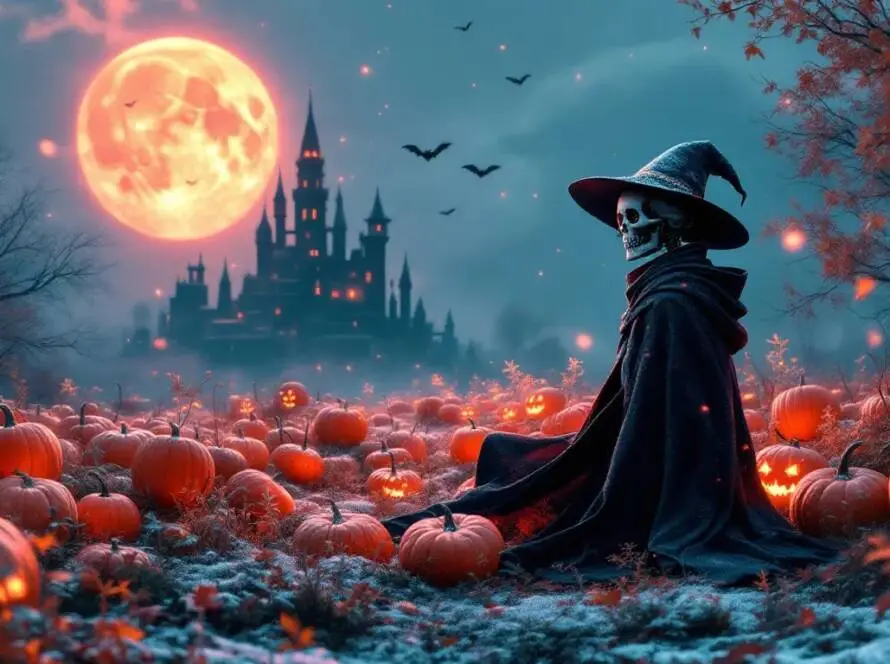Stardate: 1954
“The Witch’s Mirror” (original title: “El Espejo de la Bruja”) is a 1954 Mexican horror film directed by Chano Urueta. This film stands out for its captivating mix of horror and fantasy elements, creating a unique atmosphere that draws viewers into a world where witchcraft and revenge intertwine. Upon its release, it garnered attention not only for its engaging storyline but also for the way it tackled complex themes, making it a noteworthy entry in the horror genre of its time.
Please note: Zomboo jumps in the middle of scenes for his jokes.
Plot Synopsis
The narrative of “The Witch’s Mirror” revolves around a witch seeking revenge on those who wronged her. The film begins with the introduction of a beautiful young woman, Margarita, who becomes the witch’s target. The witch, possessing a mirror imbued with dark powers, seeks to extract her revenge through a series of supernatural events. As the plot unfolds, Margarita finds herself entangled in a web of deceit, danger, and mysticism.
The story explores the consequences of vengeance, as the witch’s actions set off a chain of horrifying events. The mirror serves as a central symbol throughout the film, representing not just the witch’s power but also the reflection of inner desires and fears. This duality adds depth to the film, making it resonate with viewers on multiple levels.
Themes and Analysis
One of the film’s central themes is witchcraft and its repercussions. The portrayal of the witch as both an influential female figure and a tragic character invites the audience to consider the complexities of female empowerment and societal perceptions of women’s roles during the 1950s. The witch’s desire for revenge can be interpreted as a commentary on the oppression faced by women, and her use of the mirror as a magical tool underscores the theme of reflection—both literal and metaphorical.
Additionally, the film delves into themes of revenge and moral ambiguity. As the plot progresses, the audience is compelled to ponder the boundaries between justice and vengeance. The witch’s motivations, although rooted in a desire for payback, lead to profound implications for other characters, questioning the morality of her actions.
Cinematic Elements
Chano Urueta’s direction is pivotal in crafting the eerie atmosphere of “The Witch’s Mirror.” The film employs various cinematic techniques, including atmospheric lighting and striking visuals, which enhance the sense of dread and mystery. The cinematography effectively captures the supernatural elements, creating haunting imagery that lingers in the audience’s minds.
The use of special effects, particularly in relation to the mirror and its magical properties, showcases the filmmakers’ innovative approach in creating moments of suspense and horror. The performances, especially by the lead actress, convey the emotional weight of the characters’ struggles, further immersing viewers in the narrative.
Release and Reception
Initially released in 1954, “The Witch’s Mirror” was a significant contribution to Mexican cinema’s horror landscape. The film was later released in an English-language version in the United States in 1969, expanding its reach and introducing its unique story to a broader audience.
While not as widely recognized in mainstream horror circles today, “The Witch’s Mirror” remains a cult classic among fans of vintage horror films. Its combination of horror, fantasy, and thematic depth has solidified its place in the genre’s history, influencing subsequent filmmakers and resonating with audiences who appreciate its blend of eerie storytelling and rich, symbolic content.
Conclusion
In summary, “The Witch’s Mirror” is a profound exploration of revenge and witchcraft, highlighting societal perspectives on women within its supernatural narrative. Its engaging plot, combined with Urueta’s effective direction and stirring performances, makes it a notable film worth exploring for both horror aficionados and those interested in the complexities of storytelling in mid-20th-century cinema. Looking back on its legacy, it serves as a reminder of the powerful narratives that can emerge from timeless themes. Whether for its historical significance or its thematic richness, “The Witch’s Mirror” endures as a captivating piece of horror film history.
Viewing Options
You can watch “The Witch’s Mirror” on various platforms, including:
- Internet Archive: Offers free streaming and downloads of the film.
This film remains a significant achievement in cinema history, celebrated for its artistic innovation and exploration of psychological horror.
Disclaimer:
The information provided in this blog is for informational purposes only and should not be considered professional advice. While we strive to provide accurate and up-to-date information, we make no guarantees about the completeness or reliability of the content. Any actions you take based on the information in this blog are at your own risk. Additionally, this blog may contain affiliate links, and we may earn a commission from purchases made through those links.


